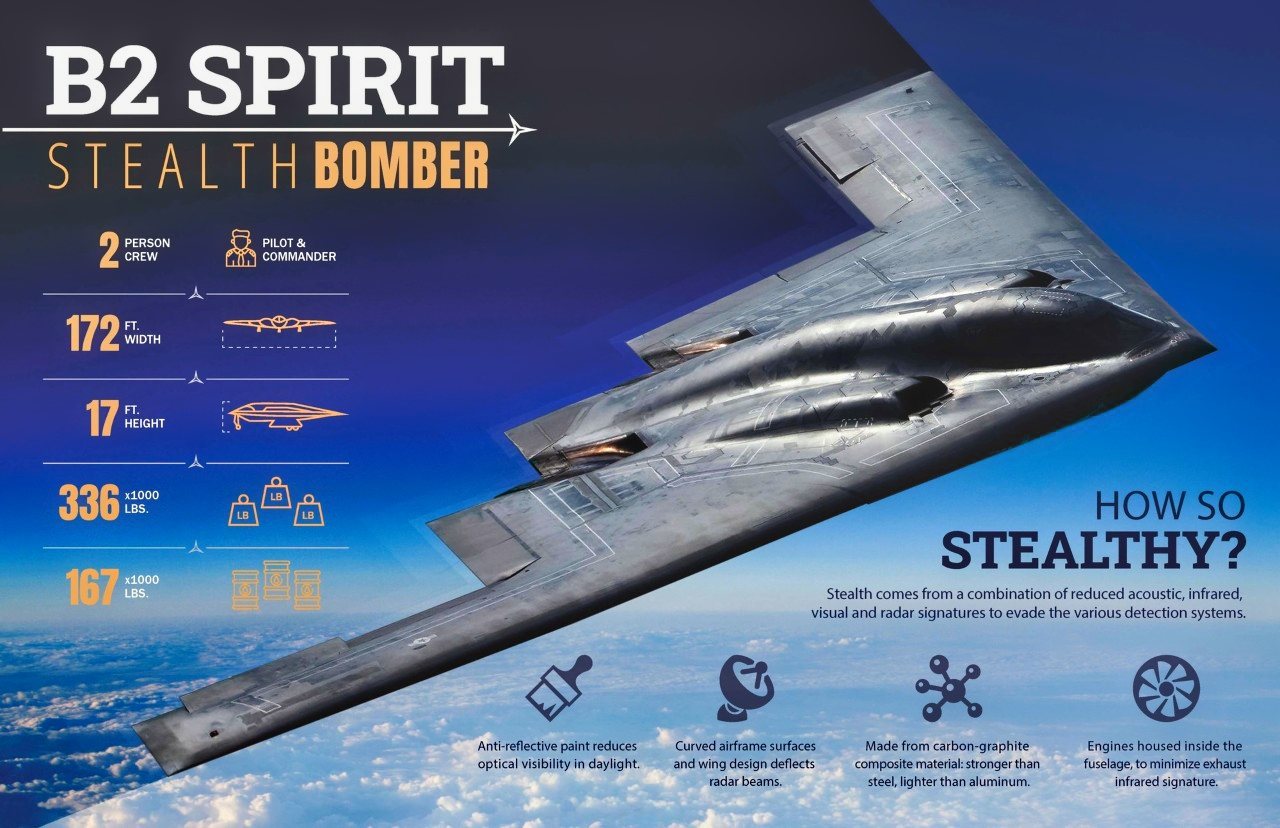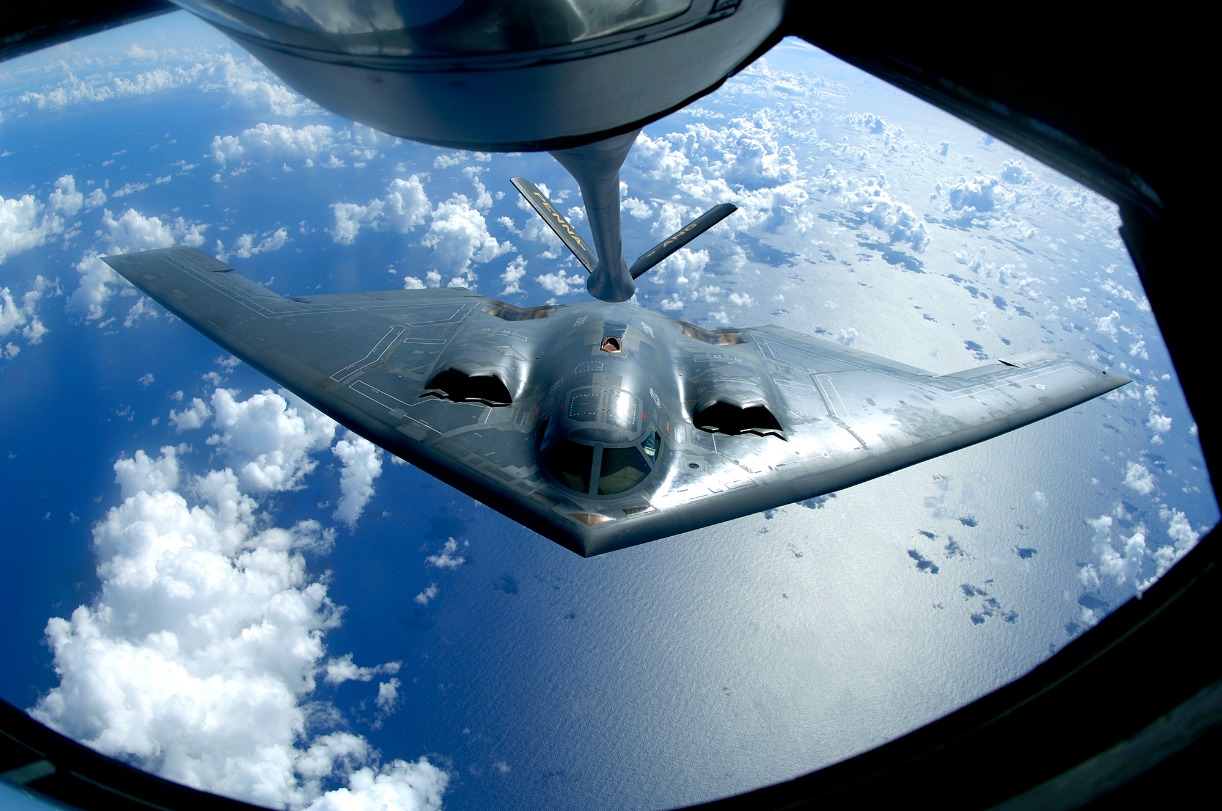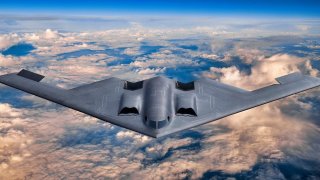Quicksink: The U.S. Military's New 'Cheap' Aircraft Carrier Killer Weapon
The U.S. military is developing its own anti-ship capabilities to counter threats in the Indo-Pacific, particularly from China's advanced anti-ship ballistic missiles like the DF-21D and DF-26B. During the 2024 Rim of the Pacific (RIMPAC) exercise, the U.S. Air Force tested the Quicksink, a low-cost, GPS-guided bomb, using a B-2 Spirit stealth bomber to sink the ex-USS Dubuque.
Summary and Key Points: The U.S. military is developing its own anti-ship capabilities to counter threats in the Indo-Pacific, particularly from China's advanced anti-ship ballistic missiles like the DF-21D and DF-26B. During the 2024 Rim of the Pacific (RIMPAC) exercise, the U.S. Air Force tested the Quicksink, a low-cost, GPS-guided bomb, using a B-2 Spirit stealth bomber to sink the ex-USS Dubuque.

-This new strategy emphasizes using stealth bombers to deliver precision-guided bombs, offering a potentially effective and economical method to neutralize large naval threats, including carriers, echoing tactics successfully employed during World War II.
The U.S. Military is Developing Its Own Carrier Killers – Meet the Quicksink
There has been a lot of hype about China's advanced anti-ship ballistic missiles. Both the DF-21D, with a range of up to 2,150 km, and the DF-26B, with a range of 4,000 km, threaten naval vessels operating in the Indo-Pacific – notably the U.S. Navy's nuclear-powered supercarriers.
The range of those weapons could deny access to U.S. and other warships in the South China Sea and in other waters Beijing claims.
However, the United States is also developing anti-ship ordnance, and earlier this month put its low-cost Quicksink to the test. The guided bomb was dropped by a U.S. Air Force B-2 Spirit stealth bomber during the ongoing Rim of the Pacific (RIMPAC) 2024 exercise.
The long-range strategic bomber employed the relatively inexpensive GPS-guided bombs in a SINKEX of the ex-USS Dubuque (LPD-8), an Austin-class amphibious transport dock.
"This capability is an answer to an urgent need to quickly neutralize maritime threats over massive expanses of ocean around the world at minimal costs," the U.S. Navy's 3rd Fleet said in a statement following the sinking of the former LPD-8.
It was one of two SINKEX, a sink-at-sea live-fire training exercise involving decommissioned U.S. Navy warships, with the ex-USS Tarawa also sunk by a long-range anti-ship missile.
Stealth Bombers and Guided Bombs
Much of the emphasis on anti-ship ordnance in recent years has gone to ballistic missiles and hypersonic weapons. The speed and kinetic force of hypersonic missiles would mean that an explosive warhead might not be required to do significant damage to a warship such as a carrier.
But that is only if the missiles, hypersonic or otherwise, strike a target.

Experts suggest that could be far more difficult than it sounds. The Pacific Ocean is vast, and carriers are speedy vessels screened by a carrier strike group that includes guided-missile destroyers specifically designed to counter incoming threats. Likewise, efforts are underway to develop Directed Energy Weapons including lasers that could counter missiles and drones.
Even as the U.S. military continues to develop hypersonic missiles, it is now exploring a rather old-school anti-ship approach – bombs dropped by aircraft. It worked with great success in World War II to send the Imperial Japanese Navy's fleet of carriers to the bottom of the Pacific Ocean, and it could do the same to China's new carriers.
"The B-2's demonstrated anti-maritime capability will constrain if not deter plan operations east of Taiwan or off the Philippines," retired U.S. Navy Capt. Carl O. Schuster, former director of the U.S. Pacific Command Joint Intelligence Center, told CNN. "You cannot ignore a weapon that can sink a 25,000-plus-ton ship with one hit."
Schuster makes a good point. A low-cost guided bomb delivered by a stealth aircraft – not a missile fired from land-based launchers – might just be the true carrier killer.
Author Experience and Expertise: Peter Suciu
Peter Suciu is a Michigan-based writer. He has contributed to more than four dozen magazines, newspapers, and websites with over 3,200 published pieces over a twenty-year career in journalism. He regularly writes about military hardware, firearms history, cybersecurity, politics, and international affairs. Peter is also a Contributing Writer for Forbes and Clearance Jobs. You can follow him on Twitter: @PeterSuciu. You can email the author: [email protected].
Image Credit: Creative Commons and/or Shutterstock.


